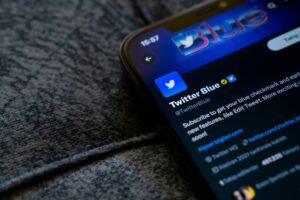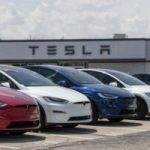
What do Beyoncé and Cristiano Ronaldo have in common? As of today, they are no longer verified on Twitter.
The social media giant began removing the once-coveted blue tick verification from thousands of accounts on Thursday.
The move comes as owner Elon Musk attempts to overhaul the social media company to turn a profit.
Users who wish to retain the check beside their name must pay $84 a year (£67) to subscribe to Twitter Blue.
As some lost their ticks, others kept them.
Despite saying he would not pay to be verified, LeBron James still has a blue tick which is a “complimentary subscription” gifted by Elon Musk.
The billionaire confirmed Stephen King and William Shatner also got the same deal.
As the change happened, many formerly verified took to Twitter to joke about it, or mourn the loss.
Other users noted the irony that actor Jason Sudeikis had lost his verification, while Ted Lasso, the fictional character he portrays, had not.
US rapper Ice T quipped the uproar over the checks was unnecessary.
“The fact that we’re even discussing Blue check marks is a Sad moment in society,” he posted.
The company first introduced the verification feature in 2009, after a former professional baseball player sued the social media giant over imposter accounts.
The blue check became a status symbol and a sign of authority. But in the new Twitter-verse, Mr Musk wants users to pay to be verified.
The decision to monetise verification could usher in a massive cultural and power shift on the platform.
In the days before verification, Kanye West, Shaq and Ewan McGregor were among the first celebrities to speak out about being impersonated on Twitter. Now that the badges are gone, a celebrity’s follower count may become the only way to tell the difference between someone famous and an imposter.
Within a few hours of losing verification, an account posing as Hillary Clinton, complete with the same profile picture as the former US Senator, “announced” she would again run for the presidency.
Under Twitter’s new verification scheme, gold, grey and blue badges are meant to provide more context to how an account was verified.
But the lack of verification is already causing confusion. In New York City, a new handle has claimed to be the “authentic Twitter account” representing the government.
Experts warn these are the kind of tweets that could lead to the spread of misinformation.
Mr Musk has tried to frame the decision to do away with verification as a way to democratise content on the site. But critics have argued the move will amplify disinformation as Twitter Blue subscribers will get prioritised rankings – Mr Musk has said that only verified accounts will appear in the site’s prominent For You stream.
Social media monitors and experts fear the rise in paid verification will lead to an amplification of misinformation on the site. If that were to happen, it could scare off yet more advertisers – and undermine any extra revenue Twitter is getting from its verification subscription model.
But Mr Musk said pain is a part of change.
“I feel like we’re headed to a good place,” he told media in a recent interviews. “Overall, I think the trend is very good.”
Read more:
Ticked off: Beyoncé and Ronaldo among those to lose Twitter blue check in purge






